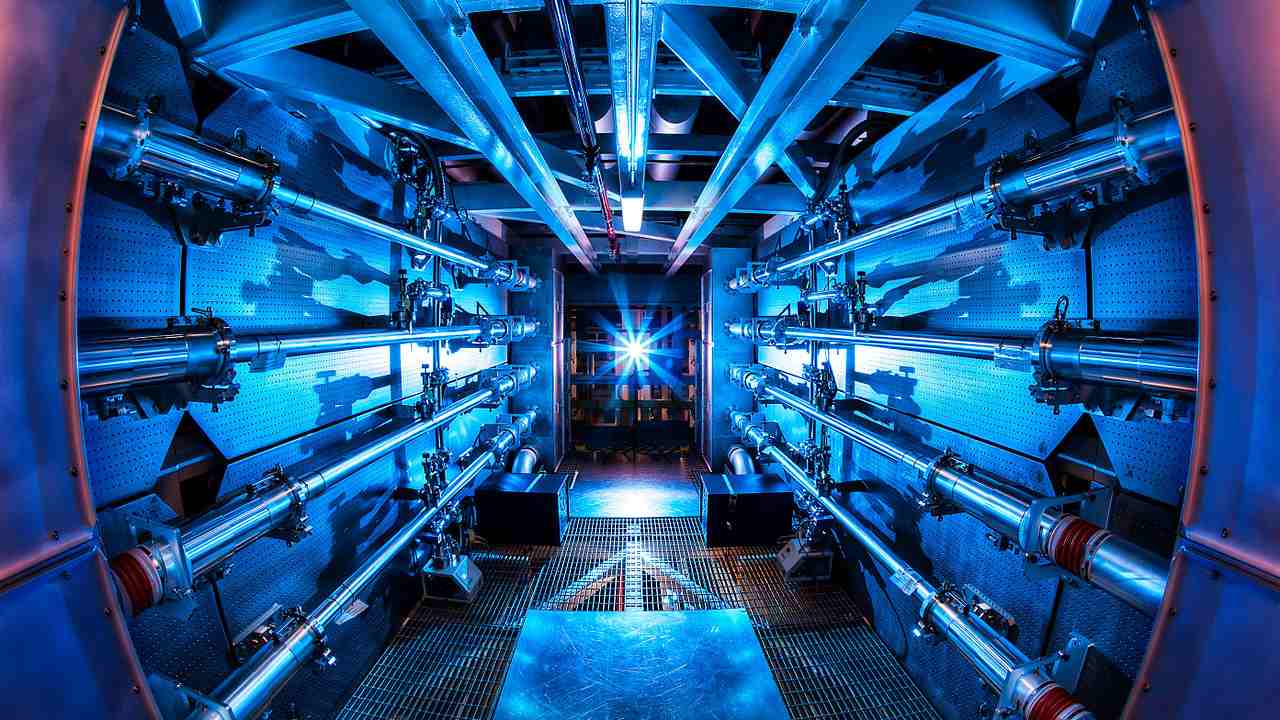Electricity-generating fusion power plants — one of the biggest inventions in history — might be safe, efficient, reliable and environmentally responsible. But, how far are we from turning science fiction into reality — meaning a world where nuclear fusion energy will be powering our day-to-day lives? Some 60 years. The upcoming
**International Thermonuclear Experimental Reactor** (ITER), the world’s largest fusion reaction research facility in Saint-Paul-les-Durance, some 35 km north of Aix-en-Provence in southern France, aims to develop fusion technology to make commercially-viable
**fusion energy** , the world’s clean energy, a reality by the second half of this century So, what is fusion energy? With its high-energy yields and low carbon primary energy source, fusion, the same source that powers stars, could provide an alternative to conventional energy sources like coal-fired power plants. Scientists say the
**ITER facility** aims to fuse two isotopes of hydrogen — tritium and deuterium — to deliver a powerful, clean source of electricity. This requires the containment of plasma at temperatures 10 times higher than the sun’s core. In a power plant, conventional steam generators, turbines and alternators transform the heat into energy. [caption id=“attachment_5365751” align=“alignnone” width=“1280”] An image of ITER’s construction site in Cadarache, France. Image: ITER[/caption] India is
**among the six nations** and one grouping, which represent more than 50 per cent of the world’s population and about 85 per cent of global GDP, pursuing the construction of the world’s largest tokamak fusion device, a donut-shaped configuration designed to produce 500 ME of thermal fusion energy. The other partners are Russia, the US, Japan, China and South Korea, as also the European Union. At a cost of over $24 billion, the ITER facility could be the answer to the world’s clean energy needs — but that won’t be possible till 2035. “The ITER project is very much on track. By the second half of this century this fusion technology will be available,” ITER Director General Bernard Bigot told this visiting IANS correspondent. “Fossil fuel will not be so easy to use any more. We will have a competitive fusion technology which will be available for the whole world,” he said. Bigot, who believes a global challenge needs a global response, said the first plasma would be achieved by 2025. This means the reactor in the Cadarache facility is able to generate a molten mass of electrically-charged gas — plasma — inside a core. In the ITER, the Latin word for ’the way’, burning plasma is expected to reach 150 million degrees Celsius. How will it be confined? According to Fusion for Energy — the European Union’s joint undertaking for ITER — 18 powerful superconducting magnets, known as toroidal field coils, will be powered to generate a magnetic field of 11.8 tesla — approximately one million times stronger than the earth’s magnetic fields. In this “cage” they will entrap the energy of a small sun. Europe will manufacture 10 of the toroidal field coils, which will confine the super-hot plasma, and Japan will produce eight plus one spare. They will be the biggest niobium-tin magnets ever produced. At the cryostat workshop, managed by ITER India, the massive shell is progressing. The European tanks of the cryoplant and cold boxes are also fully installed. India contributes through the Gujarat-based Institute for Plasma Research by manufacturing major components of the plasma chamber where the fusion reactions are going to take place for the first time in 2025. [caption id=“attachment_5365791” align=“alignnone” width=“1280”]
Illustration of the ITER core facility and its components. Image courtesy: ITER[/caption] Europe’s poloidal field coils are also manufactured on-site at a facility exclusively set up for their production. The ITER components, their weight and size are truly impressive! The biggest fusion machine in history, counting at least one million pieces of equipment, will weigh approximately 23,000 tonnes and will be housed in a 60 metre high building, scientists say. According to them, the end of this year promises to be a turning point with the completion of some key civil engineering works and the arrival of more components. Fusion energy has a long history. The breakthrough in the peaceful use of fusion as an energy source began in Russia in 1968 when a magnetic confinement device was tested with an unseen capacity for containing high-temperature plasma. “We need an energy source that will last millions of years. Fusion offers a massive and continuous power supply. It poses no concerns related to long-lived radioactive waste. And it is sustainable, with abundant natural fuel resources,” an optimistic and elated Bigot added.
After achieving the milestone mark of 50 per cent to first plasma in November 2017, ITER project implementation progresses by 0.7 percent per month. How will the ITER facility benefit society? Developing fusion science, engineering and technology to a point where fusion energy can be supplied to the grid is one of the most exciting challenges of the 21st century, and potentially one of the most rewarding. A full-scale demonstration power plant will built on the lessons learned from ITER in 2045. The industrial fusion power plants connected to the grid and operating on a competitive energy market — but that won’t be for another 57 years. Critics are not very optimistic that just throwing money at fusion will result in a commercially viable source of electricity. “There is an even more difficult challenge — to make all of this economical. I don’t think we are going to see fusion reactors supplying safe, clean energy for the world — certainly not in our lifetimes,” M V Ramana, Professor and Simons Chair in Disarmament, Global and Human Security Liu Institute for Global Issues, School of Public Policy and Global Affairs, University of British Columbia, told IANS.


)
)
)
)
)
)
)
)
)



